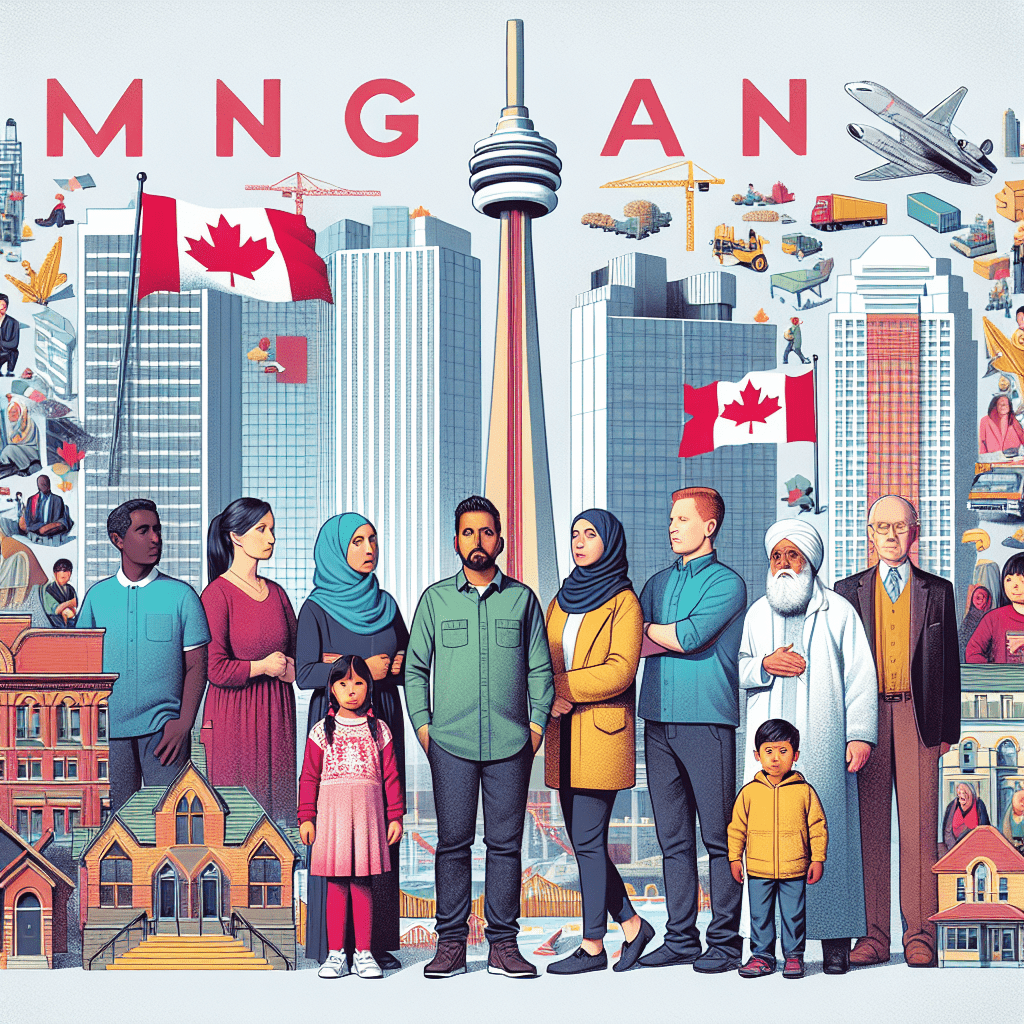Debating Canada’s Immigration Rates: Is it Too Much?

Canada’s Immigration Dilemma: Balancing Growth with Public Sentiment
Canada has long embraced its identity as a “nation of immigrants,” a principle that underscores its multicultural fabric and economic vitality. However, recent developments indicate a growing divide between governmental immigration policies and public sentiment. A national survey reveals that 58% of Canadians believe immigration levels are too high, even as the government seeks to address these concerns by reducing annual immigration targets from 500,000 to 395,000 for the 2025-2027 period. This article explores the underlying reasons for this sentiment, its implications for Canada’s future, and the essential need for balanced immigration policies.
Understanding the Concerns
The apprehension surrounding immigration levels is not confined to specific demographics; it spans across provinces, with Alberta (61%), Ontario (59%), Quebec (58%), and British Columbia (56%) expressing significant concerns. Interestingly, even among newcomers, nearly half (49%) believe that current immigration levels should be lowered.
This widespread unease is linked to tangible pressures on essential services such as housing, healthcare, and infrastructure. As urban centers become increasingly crowded, the competition for jobs and resources intensifies, leading to a perception that immigration is directly responsible for these challenges.
The Economic Paradox
Despite these concerns, a majority of Canadians—53%—recognize the importance of immigrants in driving economic growth and filling labor shortages. Skilled migrants are often viewed favorably, with 73% of respondents supporting their entry into the country. This creates a paradox: while many Canadians value the contributions of immigrants, they simultaneously fear the implications of high immigration levels.
The key lies in balancing economic needs with the capacity of social infrastructure. As Canada faces challenges such as an aging population and low birth rates, the influx of immigrants is critical for sustaining the workforce and tax base necessary to fund public services. The risk of stagnation in population growth could lead to labor shortages, particularly in sectors like healthcare, technology, and construction.
Cultural Identity vs. Practical Reality
Despite the prevailing concerns about immigration, a significant 70% of Canadians affirm that the nation’s identity is fundamentally tied to its immigrant roots. This sentiment reflects a deep-seated belief in the value of diversity and the contributions that various cultures bring to Canadian society.
However, perceptions of immigration differ significantly based on tenure in Canada. Those who immigrated years ago may view current trends through a different lens than recent arrivals, complicating the national conversation about immigration policy.
Navigating the Future
Prime Minister Trudeau’s decision to recalibrate immigration targets aims to provide a strategic response to public concerns while ensuring that Canada remains competitive on the global stage. However, it’s crucial that these adjustments do not stifle the very economic growth that immigration supports.
The path forward requires a nuanced approach that not only addresses public sentiment but also reinforces the understanding of the economic and social benefits that immigrants bring. Clear communication regarding the types of immigrants welcomed into Canada and the rationale behind immigration policies will be vital in fostering public trust and support.
In conclusion, Canada’s immigration policy must navigate a complex landscape of economic necessity, public perception, and cultural identity. As the nation looks to the future, finding a balance that accommodates growth while addressing the concerns of its citizens will be essential for maintaining Canada’s reputation as a welcoming and prosperous nation built on the contributions of immigrants.



